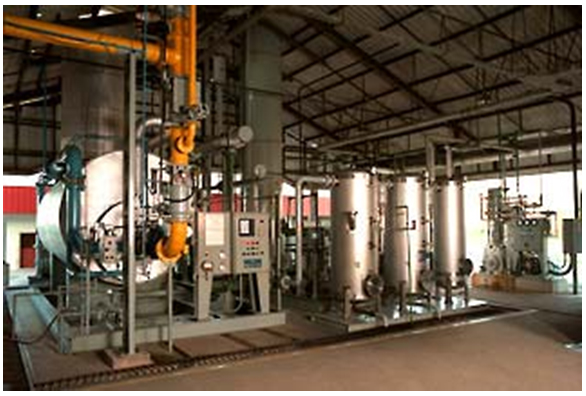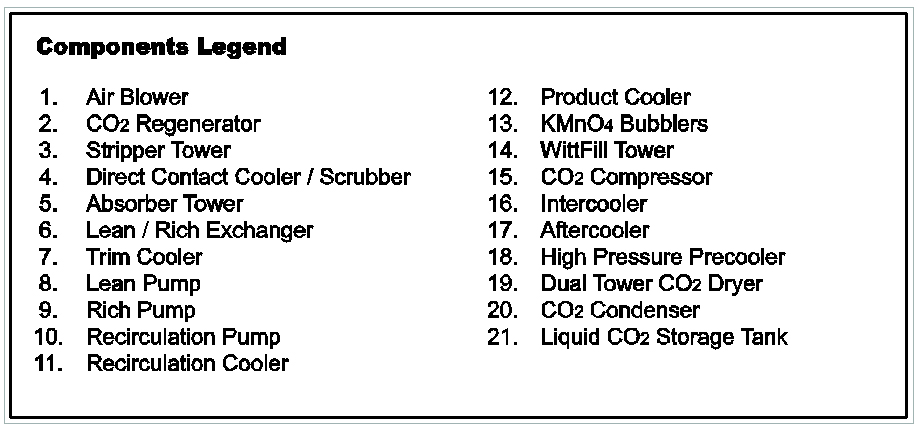
CO2 Production via direct combustion consists of air and a hydrocarbon fuel (Oil, Kerosene, Propane, Natural Gas) which are fed into a burner to produce a flue gas consisting of carbon dioxide and nitrogen. This flue gas is first cooled and scrubbed in the flue gas cooler and then proceeds to the CO2 absorber.
There the CO2 is absorbed in a solution of monoethanolamine (MEA) and the nitrogen is vented to the atmosphere. The MEA solution, rich with CO2, is returned to the stripper where the heat of combustion from the regenerator is utilized to drive off the carbon dioxide in gaseous form at controlled pressure and return the MEA to the reservoir in the regenerator.
After leaving the stripper tower, the carbon dioxide gas is passed through steps of purification to obtain the highest quality CO2 for food and beverage industry. This purification train consists of two (2) CO2 Potassium Permanganate scrubbers and an activated carbon purifier which also contains a special purifying media designed to insure food and beverage quality CO2. After purification, the carbon dioxide is then compressed to 250 psig (17.6 kg/cm2) with an oil-free CO2 Compressor and dried in a desiccant type dryer to a dewpoint of -40°F (-40°C) at working pressure.
This removes the water vapor from the CO2 gas and thereby eliminates freeze-up of the CO2 Liquefying Condenser. In the liquefying condenser, the CO2 gas is liquefied at 250 psig (17.6 kg/cm2) and -10°F (-23°C) by a self-contained refrigeration system utilizing environmentally acceptable refrigerants, and is stored in an insulated liquid Storage Tank sized to meet each installation requirement. Liquid CO2, which occupies less volume than in a gaseous state, is efficiently stored and is readily available for its multiple uses: vaporization, cylinder filling, bulk transfer and dry ice.

All capacities and utility responsibility shown in the table are approximate and subject to change based on types and properties of fuel, water,MEA and local condition



